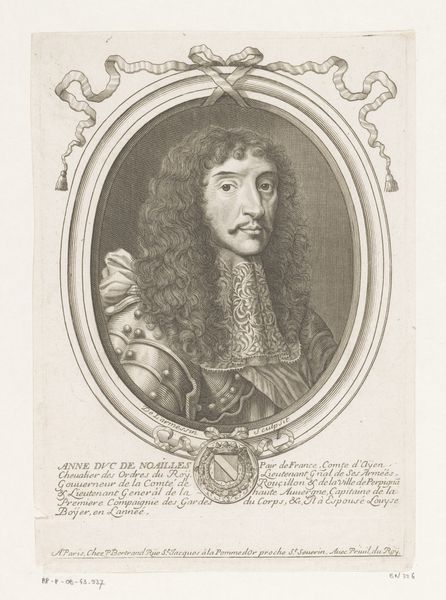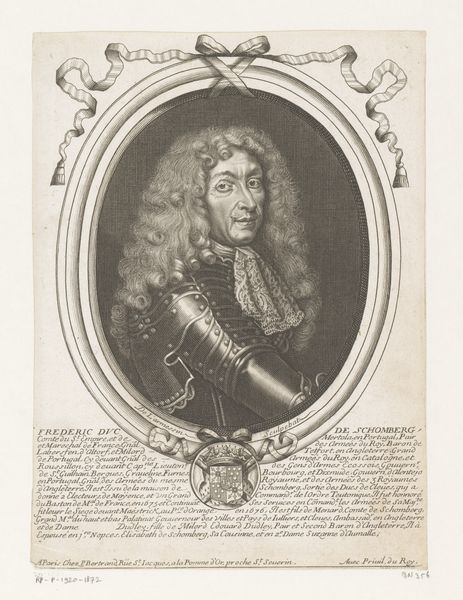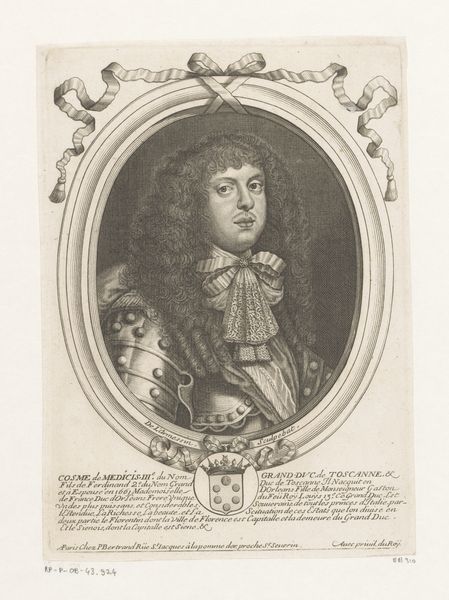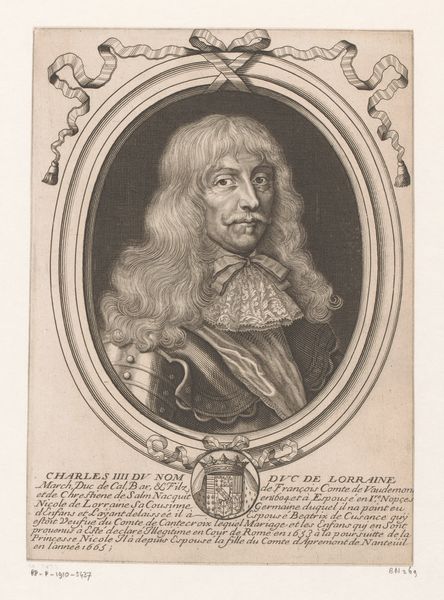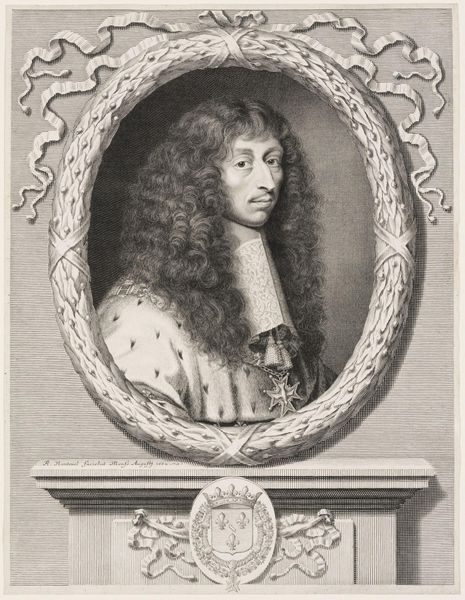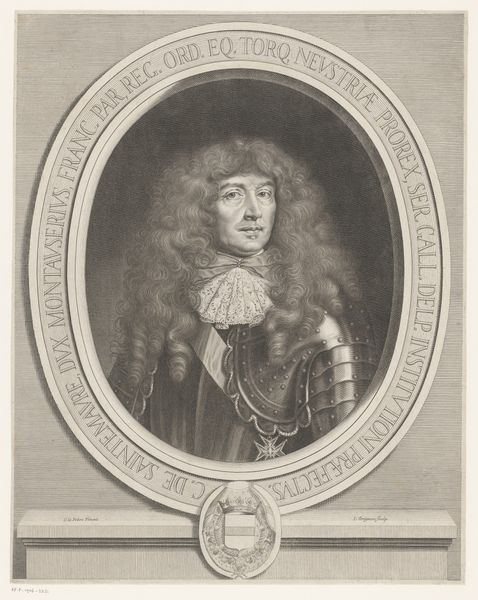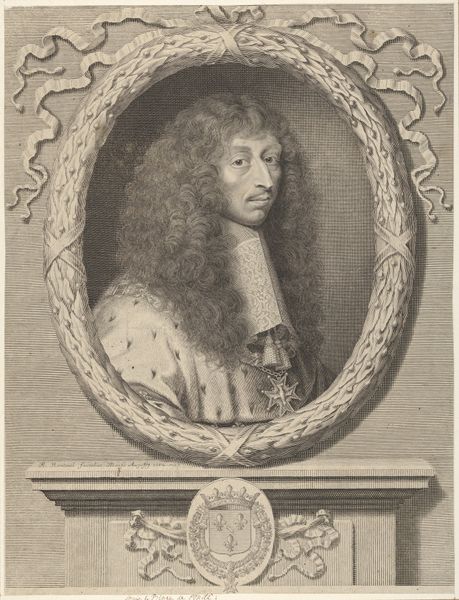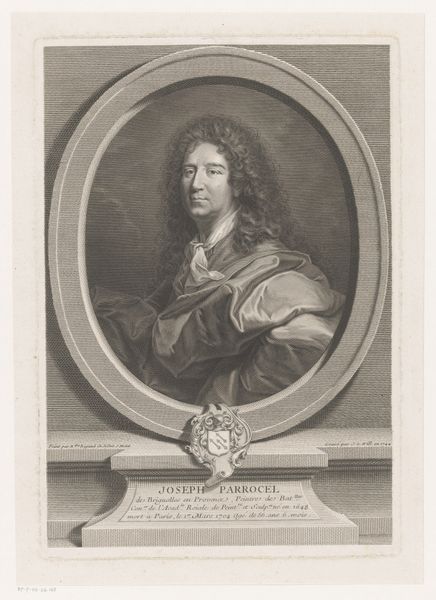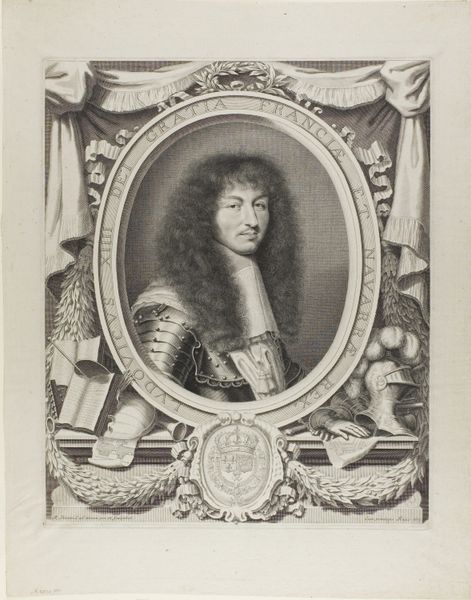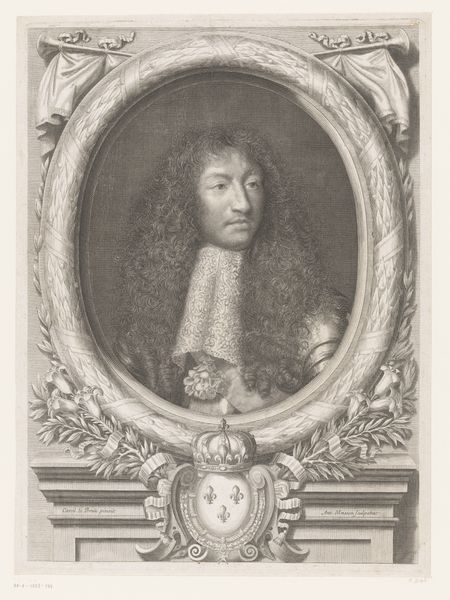
print, engraving
#
portrait
#
baroque
# print
#
history-painting
#
engraving
Dimensions: height 224 mm, width 159 mm
Copyright: Rijks Museum: Open Domain
Curator: Here we have Nicolas de Larmessin’s 1661 engraving, “Portret van Armand de Bourbon-Condé,” currently held at the Rijksmuseum. It offers a glimpse into the world of 17th-century French aristocracy. Editor: My first impression is that it's…restrained. The oval frame and the ribbon motif give it a decorative quality, but the man himself, despite his armour, looks almost contemplative, with perhaps a tinge of melancholy in his eyes. Curator: Absolutely. Armand de Bourbon-Condé, Prince de Conti, was a prominent figure during a tumultuous period in French history. This print served not just as a portrait, but as a piece of political propaganda. The armor, for instance, projects authority, reminding viewers of his military status despite his other pursuits. Editor: The armour, yes, speaks of power and status, but the almost languid pose, the soft curls, and the lace at his collar suggest something more complex. The artist captures not only military prowess but also a hint of vulnerability or perhaps intellectual curiosity. It feels very baroque, reflecting the complexity of symbolism of the era. I'm drawn to the details—the individual curls of his hair and the precise lines defining the metal of his breastplate. There is a deep symbolism that alludes to a person in times of great unrest. Curator: That tension you point out reflects the ongoing conflicts between the French monarchy and factions within the nobility. Armand de Bourbon-Condé straddled both worlds, and this print showcases that. Larmessin was a master engraver employed to enhance the image of powerful figures like Conti. Note how the lettering is carefully placed as it adds a critical narrative element, further establishing Conti’s identity and lineage, which, during this time, became extremely important and a strong message. Editor: It's remarkable how this small print—we can tell it's not a huge work—carries such significant weight. Beyond being a depiction, it shows visual signifiers of power and internal complexities during a key point of French history. The symbolism gives this portrait layers that become accessible across the ages. Curator: Indeed, viewing this work now gives us not just an aesthetic experience, but a reminder of the power of imagery in constructing and reinforcing social hierarchies and in conveying social standing. Editor: Precisely, and also the persistent appeal of visual storytelling, even through the rigid confines of formal portraiture.
Comments
No comments
Be the first to comment and join the conversation on the ultimate creative platform.
